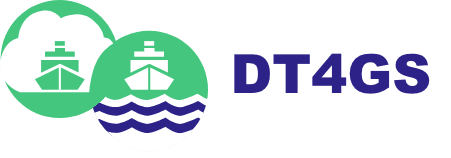This report outlines the edge and cloud technical architecture for the DT4GS project. Architecture choices and decisions are shaped by the specific requirements of the four living labs use cases. Over the first 18 months of the DT4GS project, we collated these requirements through numerous meetings, reports, and deliverables from each of the living labs. In response, we evaluated multiple technological solutions, and identified the open-source solution – OpenHorizon – as the most fitting architectural framework.
The report delves into an in-depth analysis of the technical nuances of edge and cloud computing within the maritime sector. Driven by diverse use cases from the four living labs, which include tanker, container ship, roll-on/roll-off passenger, and bulker services, it scrutinises the unique needs and requirements specific to different types of shipping services. This encompasses a detailed technical comparison of various cloud and edge computing solutions, such as Kubernetes, IoT Azure Edge, KubeEdge, Red Hat Advanced Cluster Management, and KubeStellar, all evaluated against the backdrop of user-driven requirements.
The report provides a detailed description of the OpenHorizon platform for managing the service software lifecycle of containerized workloads and related machine learning assets. In particular it focuses on the requirements to address application placement at scale and manage operations in conditions with limited or sporadic connectivity.
A significant element of this deliverable is the analysis of computing needs for advanced digital twin functionalities in the shipping industry. It considers the diverse characteristics and requirements of the four living labs, focusing on scalability, resilience, usability, and system administration. This includes considerations of typical shipping routes, operational needs, skill availability, security, and connectivity.
In its concluding section, this deliverable explores the role of AI in two key areas: firstly, in simplifying the management and orchestration of applications across distributed cloud and edge computing environments within the shipping industry. This includes examining how innovation can meet the demands for scalability and the resulting increases in productivity. Secondly, it looks at how AI can aid in developing a scalable model library that is versatile enough to meet the diverse needs of the shipping sector.
This report represents the first version of the deliverable. The upcoming version (D2.9) to be delivered in M34 will provide a more detailed exploration into enhancements powered by AI, specifically designed to cater to the distinct requirements and challenges of creating digital twins for green shipping.

